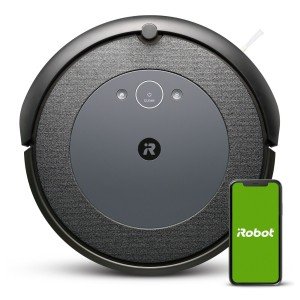The Rise of Robotic Vacuums: A Comprehensive Overview
In today's busy world, technology is consistently developing to make our lives easier, and the family cleaning section has actually witnessed one of the most significant improvements: the robotic vacuum. This intelligent device not only conserves energy and time however likewise ensures a cleaner home environment with very little manual effort. This post digs into the interesting development of robotic vacuums, how they work, their advantages and disadvantages, market patterns, and future instructions.
The Evolution of Robotic Vacuums
Robotic vacuums have made excellent strides considering that their beginning in the late 1990s. The very first commercially available robotic vacuum was presented in 1996, followed by numerous models, each developed with escalating elegance and features. Here is a short timeline of robotic vacuum development:
| Year | Event |
|---|---|
| 1996 | Release of the very first robotic vacuum (Electrolux's Trilobite) |
| 2002 | iRobot Roomba is released, making robotics mainstream |
| 2010 | Introduction of innovative mapping and navigation functions |
| 2017 | Combination of AI and smart home compatibility |
| 2022 | Introduce of extremely advanced designs featuring self-emptying dustbins |
How Robotic Vacuums Work
Robotic vacuums make use of a mix of sensing units, algorithms, and synthetic intelligence to navigate spaces efficiently. Here's how they operate:
- Navigation: Most robotic vacuums use a series of sensors to spot barriers and browse around furniture. Some high-end models integrate LIDAR (Light Detection and Ranging) innovation to produce detailed maps of the environment.
- Cleaning Mechanisms: They are equipped with rotating brushes and suction systems to collect particles from numerous surface areas. Depending on the model, they can shift in between carpets and tough floorings flawlessly.
- Smart Features: Many contemporary robotic vacuums are Wi-Fi enabled, allowing users to control them from another location through a mobile phone app. Features typically consist of scheduling, mapping out cleaning paths, and combination with other smart home gadgets.
- Self-Maintenance: High-end systems might feature self-emptying capabilities, where the robot can dock itself to a base that collects dust and debris without human intervention.
Advantages of Robotic Vacuums
Robotic vacuums have gathered enormous appeal, and for good reasons. Here are a few of the most significant benefits:
- Time-Saving: Automating the cleaning procedure enables users to take part in other meaningful activities.
- Effective Cleaning: Regular cleaning can be easily attained by arranging the robot to clean day-to-day or weekly, keeping dirt and allergens at manageable levels.
- Compact Design: Their little size allows them to fit under furniture and in hard-to-reach places.
Despite their benefits, robotic vacuums also include limitations:
- Limited suction power: While they work for maintaining tidy floorings, they might not match the deep cleaning of traditional vacuums.
- Battery life: Most models require to return to their dock after a specific period of usage.
- Preliminary costs: High-quality robotic vacuums can be pricey, though costs have been decreasing with developments in technology.
Existing Market Trends
The market for robotic vacuums is broadening quickly. According to a recent marketing research report, the worldwide robotic vacuum cleaner market is expected to reach ₤ 7.2 billion by 2027, growing at a CAGR of 23.5%, driven by a number of aspects:
Increased Adoption of Smart Home Devices
The increase of smart home innovation has actually motivated consumers to incorporate robotic vacuums into their homes. Numerous robotic vacuums work perfectly with home assistants like Amazon Alexa and Google Assistant, streamlining their operation.
Advances in Robotics and AI
As the technology behind robotic vacuums progresses, models are being equipped with much better navigation systems, AI algorithms for learning personal cleaning habits, and enhanced features for particular floor types.
Focus on Health and Hygiene
The heightened awareness of cleanliness and hygiene, especially due to current global occasions, has actually driven consumers to invest in devices that routinely get rid of dust, allergens, and family pet hair from their homes.
Future Directions
As innovation advances, robotic vacuums are expected to develop further, incorporating features that increase their effectiveness in households. Anticipated developments include:
- Improved AI Learning: With developments in artificial intelligence, future models will be better at understanding their environment and adapting to the needs of their owners.
- Multi-Purpose Design: Potential future designs may include functions for mopping, decontaminating, and air filtration in addition to vacuuming.
- Sustainability: As eco-consciousness rises, manufacturers are most likely to concentrate on energy effectiveness, recyclable materials, and sustainable production practices.
Frequently Asked Questions About Robotic Vacuums
1. redirected here on carpet?Yes, many robotic vacuums can transition between different floor types, including carpets and tough floors. 2. How typically need to I run my robotic vacuum?It depends
on your household's cleaning needs, but lots of users
schedule their robotic vacuums to run daily or every number of days. 3. Are robotic vacuums worth the investment?For lots of consumers, the time conserved and convenience used by robotic vacuums makes them rewarding,
specifically for hectic homes. 4. Can I manage my robotic vacuum remotely?Most modern-day robotic vacuums can be managed through a smartphone app, enabling for scheduling and monitoring from anywhere. 5. Do I still require a conventional vacuum cleaner?While robotic vacuums effectively handle daily cleaning, a conventional vacuum may still be necessary for deep cleans or hardermesses. The improvement of robotic vacuums reflects a significant leap in automating household chores, combining innovative technology with user-friendly operation. As the trend toward smart homes continues and consumer expectations progress, robotic vacuums will likely keep improving, offering ever-greater benefit and efficiency in preserving tidy home. As house owners think about the potential benefits and constraints of these gadgets, it is clear that robotic vacuums have actually solidified their track record as important tools in modern-day home management.

